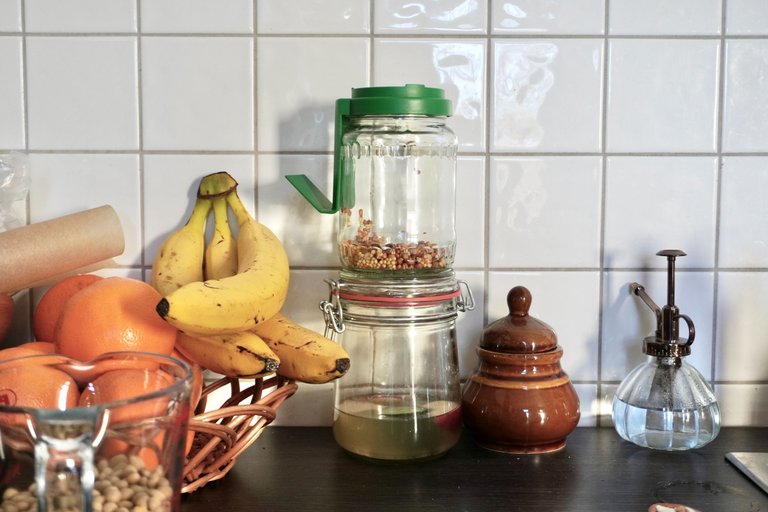
Last year, a friend brought me a book from Japan: Tabetsunagu Recipes: Preserving, Drying, and Steaming for Smart Usage by Yuko Anda, the owner of Anda Gyoza. I had wanted to read it, but since it was only available in print, I asked my friend to get it while they were in Japan.
One of the techniques introduced in the book is salt brine pickling, which has become a convenient and delicious part of my daily life. Today, I’d like to share its charm with you!
What Is Salt Brine Pickling?
Salt brine pickling is a simple way to preserve vegetables that you might not be able to finish right away. Just soaking them in about 3% salt water allows lactic acid fermentation to take place, which not only extends their shelf life but also enhances their flavor with natural umami and acidity.
To start, dissolve 3g of salt in 100g of water and add a small amount of grated vegetables (like grated daikon radish) as a starter. Then, simply add vegetable scraps such as carrot ends or cabbage stems over time. If the saltiness feels a bit weak, just add a little more salt. This method is very forgiving—I’ve been successfully keeping a batch going at room temperature in my kitchen for months.
So far, I’ve pickled a variety of vegetables, including daikon radish, carrots, cabbage, Chinese cabbage, broccoli stems, cucumbers, parsnips, and even zucchini tops. They all turn out delicious! My personal favorite is broccoli stems, which develop a zha cai-like flavor.
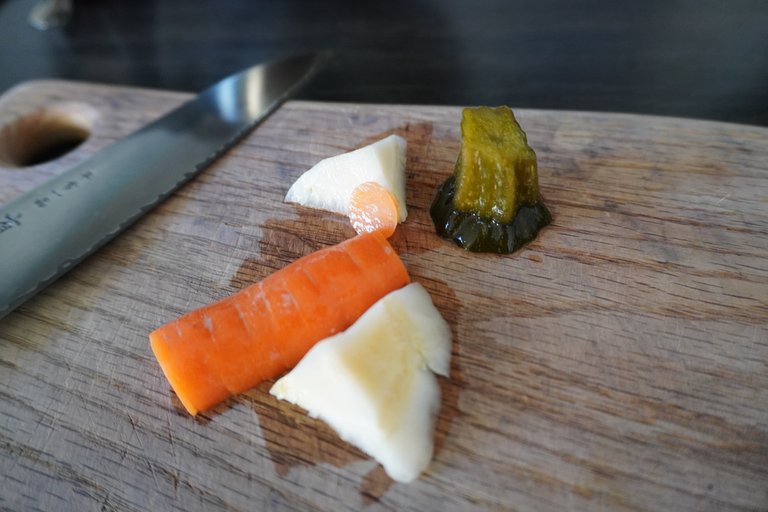
Since fermentation naturally enhances flavors, I enjoy experimenting with different ingredients. I once added an apple, and it turned out surprisingly tasty!
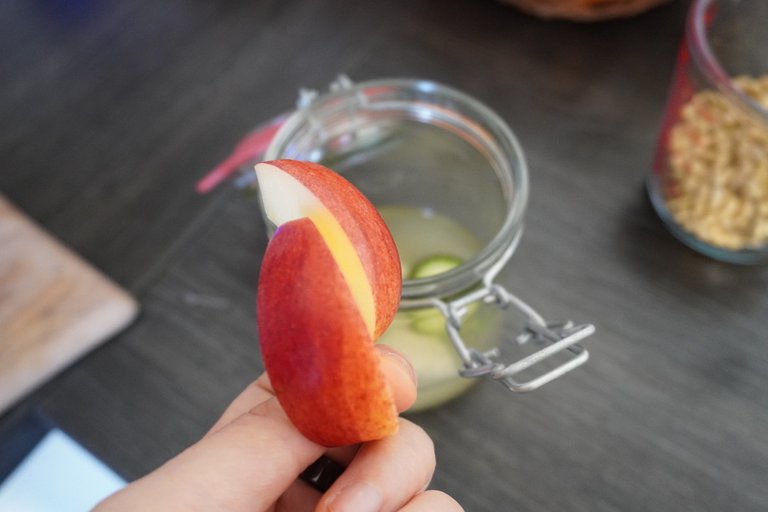
How to Use Salt Brine Pickles
Salt brine pickles are delicious as they are, but they also work wonderfully in various dishes. You can add them to salads or rice bowls, or finely chop them to mix into dumplings or croquettes for an extra umami boost.
I even snuck some into fried rice once, and my partner—who normally isn’t a fan of sour flavors—ate it happily without noticing! Thanks to its mild yet flavorful taste, salt brine pickles blend effortlessly into both Japanese and Western dishes.
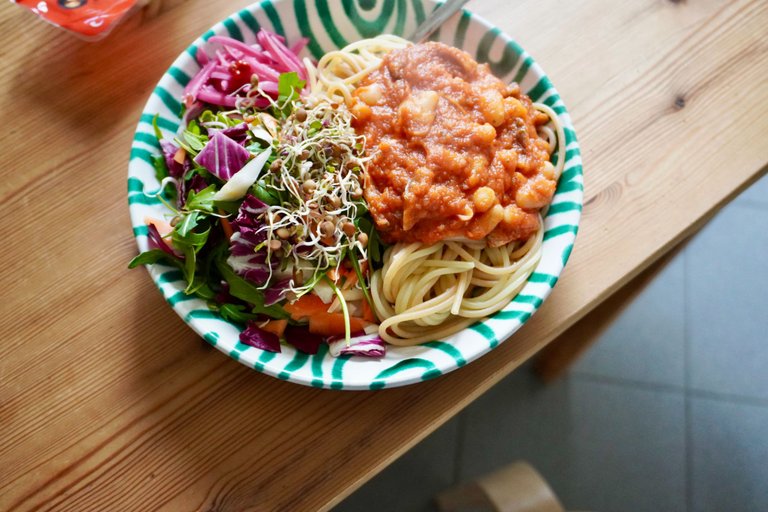
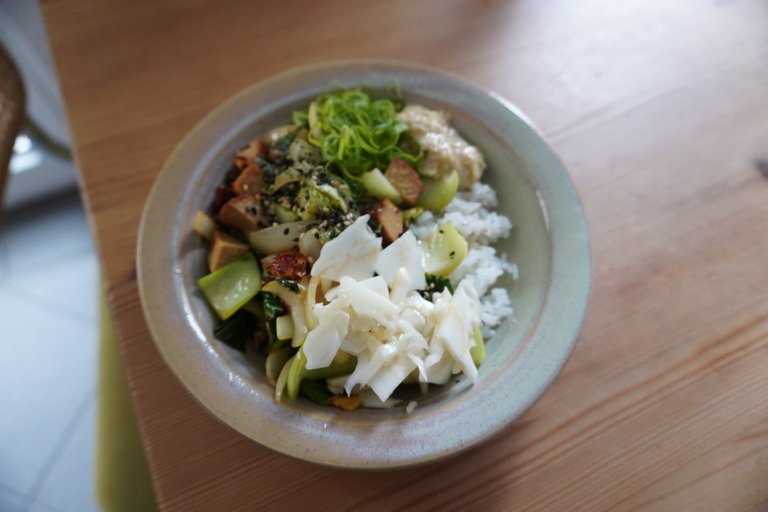
And my ultimate lazy meal? A salt brine pickle rice bowl ... Just finely chop some pickles, put them on freshly cooked rice, and drizzle a little soy sauce—done! It’s all I need for a quick breakfast or lunch.
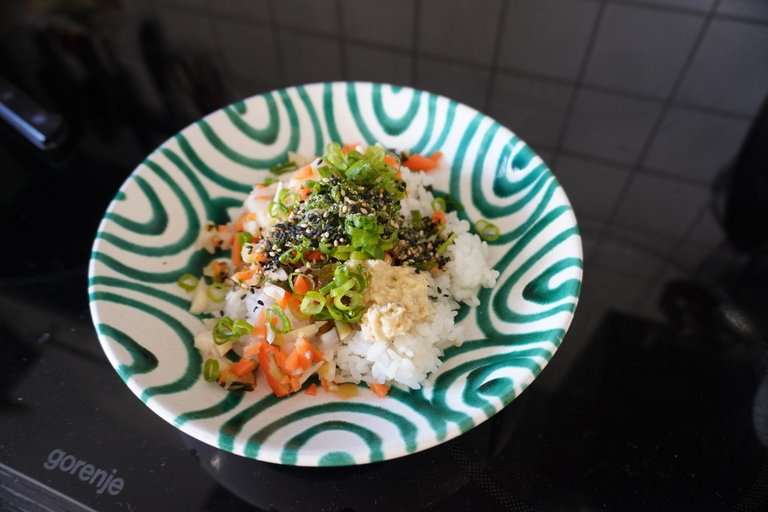
Salt brine pickling is a convenient and easy-to-make fermented food that fits seamlessly into a busy lifestyle. With just a jar, some salt, water, and vegetable scraps, you can start your own batch.
Why not give it a try? 😊

昨年、友人が日本から、按田餃子を営む按田優子さんの『食べつなぐレシピ: 漬ける、干す、蒸すで上手に使いきる』という本を買ってきてくれました。読みたかったのですが、紙版しかなく、帰国中の友人に頼んだのでした。この本の中で紹介されている塩水漬けがとても便利でおいしくて、生活の一部になってきたので紹介しようと思います。
塩水漬けの魅力 ー 無理なく、美味しく食材を使い切る
塩水漬けは、余った食材や、すぐに食べきれない食材を美味しく保存するシンプルな方法です。3%ほどの塩水に野菜を漬けるだけで、乳酸発酵が進み、保存期間が延びるだけでなく、旨味や酸味が増してさらに美味しくなります。
3%の食塩水(100gの水に塩3g)と初回は大根おろしなどおろした野菜を少し加えてスターターを作ります。そこにどんどん、にんじんの端っこなどの野菜を足していくだけです。少し塩分が弱いかなと思ったら塩を足します。大体で大丈夫、家庭用のキッチンの常温保存で、数ヶ月無事作り続けられています。
これまで、大根、にんじん、キャベツ、白菜、ブロッコリーの茎、にんじん、きゅうり、パースニップ、ズッキーニのへたなどなどいろいろなものをつけてみましたが、どれもおいしく、私のお気に入りはザーサイのような味わいになるブロッコリーの茎です。

発酵の力で適当においしくなるので、あれこれ実験的に入れてみています。この時入れたりんごもおいしかったです。

塩水漬けの使い方
塩水漬けはお漬物としてそのままおいしいほか、サラダや丼ものに加えたり、細かく刻んで餃子やコロッケに混ぜると、発酵の旨味がプラスされて奥深い味わいになります。チャーハンにこっそり混ぜたら、酸味と塩味のまさに塩水漬けな味が苦手な相方もおいしいおいしいと食べていました。和食、洋食、どんな料理ともすんなり馴染んでくれます。発酵パワー💪


そして、私の究極の手抜きご飯は、塩水漬け丼です w 炊きたてのご飯に細かく刻んだ塩水漬けをのせて、醤油をたらせばできあがり。私は朝ごはんや昼ごはんはこれだけで十分です。

塩水漬けは、忙しい日々の中でも手軽に作って食べられる発酵保存食だと思います。瓶ひとつと塩と水、野菜の切れ端があれば始められるので、トライしてみませんか?
私が塩水漬けを知るきっかけになった『食べつなぐレシピ: 漬ける、干す、蒸すで上手に使いきる』の著者の按田優子さんの解説動画があるので、トラブルシューティングなども含めて見ておくと心強いです ☺️